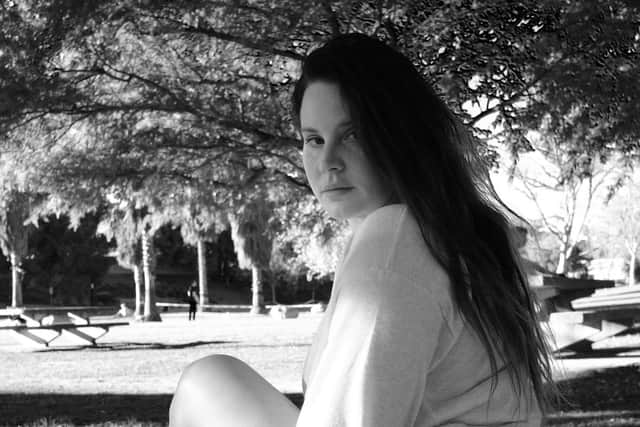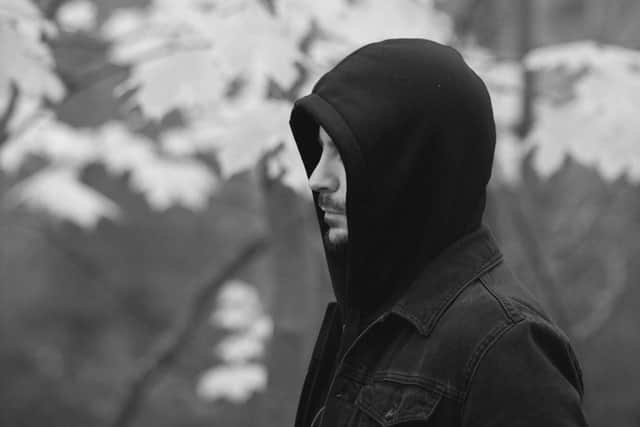Album reviews: Depeche Mode | Lana Del Rey | Turtle


Depeche Mode: Memento Mori (Columbia Records) ****
Lana Del Rey: Did You Know That There’s a Tunnel Under Ocean Blvd (Polydor) ****
Turtle: Landmass (Old World – New World Recordings) ***
Depeche Mode return with a gothic titled 15th album, their first in six years. Memento Mori carries added piquancy following the sudden death of founding member Andy Fletcher last year and, although he doesn’t appear on the album, it is tempting to the interpret it as a valediction when in fact the songs were written earlier, around pandemic themes and band members turning 60 – with “one toe in the grave,” as multi-instrumentalist Martin Gore quipped in a recent interview.
Advertisement
Hide AdAdvertisement
Hide AdIt’s hard to tell through their signature synth rock brooding if Gore and frontman Dave Gahan are feeling their age. “Don’t stare at my soul, I swear it is fine” contends Gahan on My Cosmos Is Mine, but there is vulnerability in his voice, and overdubbed vocals create the impression of a desperate monastic chant. “I’m going where there are no cares… and I’m taking my soul with me” he proclaims on Soul With Me, a loungey ballad with a touch of Eighties pomp, while there is also a beseeching undertone to the accessible industrial pop of Never Let Me Go and neo-classical synthscape Speak To Me.
Ghosts Again, one of four tracks co-written by Gore and Psychedelic Furs frontman Richard Butler, is lighter and warmer in tone with its twinkling synthesizer and buoyant pace. Butler brings sumptuous guitar twang, romantic strings and melodramatic gothic imagery to Don’t Say You Love Me, his melodic stamp is all over the quirky Caroline’s Monkey and My Favourite Stranger is a song for indoor shades with its Bowie-influenced synth judder and tech rock guitar bursts. If this is growing old, we’ll have what they’re having.
Two years on from her double whammy of Chemtrails Over the Country Club and Blue Bannisters, Lana Del Rey produces another bumper edition of breathy beauty. Did You Know That There’s a Tunnel Under Ocean Blvd is more explicitly personal than previous releases, with namechecks for her own family, ruminations on thirtysomething life and a song inspired by the real life love affair of her producer Jack Antonoff and actress Margaret Qualley – though John Denver and Harry Nilsson make the roll call of cultural references.


The album opens with a soulful backing vocal rehearsal before settling into Del Rey's signature doe-eyed ballad style on family homage The Grants. Her father Rob Grant – who will release his own (debut) album of piano pieces in June – contributes to the recording and is the inspiration for grandfather please stand on the shoulders of my father while he’s deep-sea fishing, a ravishing piano ballad with gorgeous eddying woodwind.
As the title suggests, Del Rey is not big on editing and the album runs to 77 minutes. Arguably no one is crying out for a four-minute interlude featuring a sermon by celebrity pastor Judah Smith, yet the seven-minute A&W feels essential to the collection, taking a darker turn as Del Rey delivers the arresting opening line “I haven’t done a cartwheel since I was nine, I haven’t seen my mother in a long time”, then switching direction into a second act of pitch-shifted electronica drones and languorous rap.
Father John Misty, Jon Baptiste and SYML are among the guests, injecting just enough of their own style to gently modulate Del Rey’s single-minded vision, which soothes, then skewers and ultimately seduces.
Closer to home, composer Jon Cooper aka Turtle reflects his Argyll environment in elemental and impressionistic ways on Landmass, an album of instrumental electronica, bookended by stately, ambient, meditative washes of sound which are unexpectedly punctured by the tribal chants, proggy synth chords and skittering beats of Tanzania, propulsive beats of Earth and the mournful, expressive string melody of drum’n’bass track Game.


CLASSICAL
Korngold: String Quartets Nos 1-3 (Naxos) ****
Advertisement
Hide AdAdvertisement
Hide AdKorngold’s three string quartets represent the “serious” side of a composer who left his native Austria in 1934 to pursue a later career writing for film in Hollywood. The first two predate his move to America, but even in the String Quartet No 1 of 1922-23 the characteristics that were to inform his later film work break through an otherwise austere formalism, not least the playfulness of the third movement Intermezzo and the mercurial melodic strands of the Finale. The Second Quartet of 1933 again opens astringently, but soon lets its hair down with another friendly Intermezzo, spooky translucent Larghetto and unadulterated waltz Finale – a Viennese farewell for the departing Korngold? The final Quartet most definitely inhabits two worlds, the didactic European in heated conversation with his newfound Hollywood sentimentalism. It even borrows themes from his soundtracks. Fine playing from the Tippett Quartet, now celebrating its 25th anniversary. Ken Walton
JAZZ
Christine Tobin: Returning Weather (Trail Belle Records) *****
This spellbinding album opens with the bustle of Dublin-born singer-composer Christine Tobin’s previous home of New York, before the eloquent keening of David Power’s uilleann pipes transports us to the homeland to which she has returned. Accompanied beautifully by Phil Robson on guitar, Cora Venus Lunny on violin and viola and pianist Steve Hamilton, Tobin gives rich voice to the warmth of homecoming and enfoldment in landscape, while lapping piano and pastoral strings add spare lyricism to such languorous evocations as Callow or July. Her intensely atmospheric setting of the poem Still, Life by Eva Salzman, evokes an isolated old house, its dust disturbed by a steely electric guitar interlude, while Loch Glinne, with keening pipes, evokes woods haunted by grim history. Despite these shadows, mindful of Tobin’s previous settings of WB Yeats, one feels she has embraced her own lake isle, Innisfree or otherwise. Jim Gilchrist